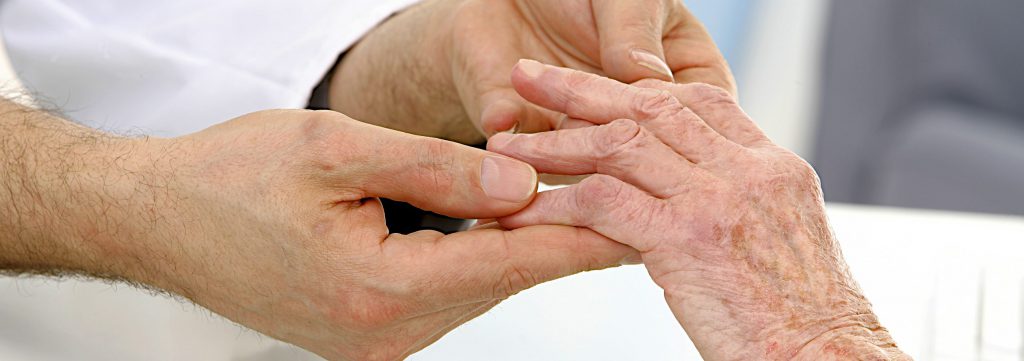Dealing with achy joints? Learn more about three of the most common types of arthritis and how to tell the difference between them.
When people think of arthritis, they often think of the wear-and-tear type associated with middle to older adulthood, but there are actually more than 100 different forms of the disease. According to the Arthritis Foundation, three of the most common types include osteoarthritis, rheumatoid arthritis and psoriatic arthritis.
Osteoarthritis
Osteoarthritis, the most common arthritic condition, is caused by the gradual degeneration of the cartilage that cushions joints. The disease is more common in older adults, but your risk for osteoarthritis may be higher if you need to lose a few pounds or have a previous joint injury. A family history of osteoarthritis and activities or exercises that stress particular joints, such as running or playing tennis, may also contribute to the risk.
Common signs and symptoms of osteoarthritis include reduced range of motion, stiffness and swelling of a joint, or joint pain.
While there is no cure for osteoarthritis, treatment options include taking medications, exercising and surgery in some cases, according to the U.S. National Library of Medicine.
Rheumatoid Arthritis
Rheumatoid arthritis is an autoimmune disease in which the immune system attacks the joints, causing inflammation and pain. Left untreated, the disease can lead to cartilage loss and joint deformity, according to the Arthritis Foundation. It can also cause inflammation and scarring in the eyes and lungs, mouth dryness, skin rashes, and skin and lung nodules.
Common signs and symptoms of rheumatoid arthritis include:
- Joint pain and swelling
- Stiffness in joints, especially upon waking
- Fever
- Fatigue
- Loss of appetite
Treatment options include joint shots, medications, and surgery, according to the Arthritis Foundation.
Psoriatic Arthritis
Psoriasis is another autoimmune disease that affects the skin, but approximately 30 percent of people with the disease will also develop psoriatic arthritis, according to the National Psoriasis Foundation. Left untreated, the disease can cause permanent joint and tissue damage.
Signs and symptoms of psoriatic arthritis include:
- Fatigue
- Pain and swelling in fingers and toes
- Reduced range of motion
- Pain and redness in one or both eyes
- Skin rashes and infected-looking nails
Treatment options include over-the-counter medications, such as nonsteroidal anti-inflammatory drugs and disease-modifying antirheumatic drugs and surgery, according to The Psoriasis and Psoriatic Arthritis Alliance.
Sources:
rheumatology.org, arthritis.org, medlineplus.gov, arthritis.org, psoriasis.org, niams.nih.gov, arthritis.org, medlineplus.gov, niams.nih.gov, arthritis.org, obesity.org, papaa.org, arthritis.org, ncbi.nlm.nih.gov, arthritis.org
